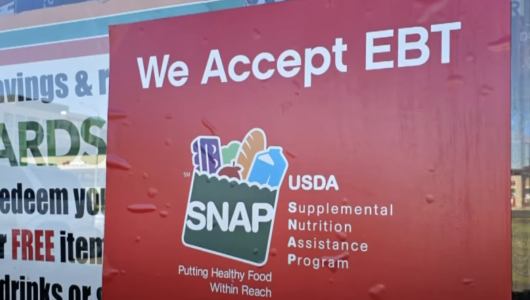What to know about this month’s SNAP benefit changes
By
Veronica E.
- Replies 1
If you depend on SNAP benefits to help cover your grocery costs, you may notice something different starting this month.
As of October 1, millions of households are now seeing adjustments in their monthly allotments.
These changes are part of the USDA’s annual cost-of-living adjustment, or COLA, which recalculates benefits to match current food prices.
While many families will see an increase, some will notice only small changes, and one state will even experience a decrease.
Understanding how this works can help you plan ahead and make the most of your grocery budget.

Why benefits are changing
Grocery prices have been climbing in recent years, and the USDA adjusts SNAP benefits annually to reflect these shifts.
Using the Consumer Price Index for Food at Home, the USDA measures how much supermarket prices have gone up and adjusts benefits accordingly.
For about 42 million Americans who rely on SNAP, this ensures monthly payments continue to support access to nutritious food as costs rise.
Also read: Are your SNAP benefits on the chopping block? New rules coming October 1 could impact your family
How much more you may receive
The amount varies depending on your household size and where you live.
Here are some highlights of the new maximum allotments for fiscal year 2025:
Remember, these are maximum amounts. Your actual benefit depends on income, expenses, and eligibility factors.
Also read: New SNAP restrictions? Some groceries could soon be off-limits with food benefits
Why some states get more help
Costs of living vary widely.
In Alaska, transporting food to rural areas makes groceries much more expensive, so benefits are adjusted higher.
Hawaii usually follows the same pattern, but this year, food costs there dipped slightly, which is why allotments are down.
The USDA’s goal is to keep benefits aligned with actual grocery prices in each location.
Also read: New SNAP eligibility changes take effect—here’s what it could mean for your benefits
Stretching your benefits
With adjustments coming through, now may be a good time to revisit your shopping habits.
Practical tips include:
Also read: SNAP benefits hit by massive scam surge—are your funds at risk?
If you’re new to SNAP
Benefits are delivered each month on an Electronic Benefit Transfer (EBT) card, which works like a debit card at participating stores and farmers markets.
If you’re unsure about eligibility or want to apply, check your state’s SNAP website or contact your local social services office.
Also read: Could your taxes go up? What to know about the new proposal tied to SNAP benefits
Final thoughts
Even small changes to monthly allotments can make a difference when it comes to putting food on the table.
Staying informed about updates and making strategic choices at the store can help stretch your benefits further.
And as always, community programs and resources are there to provide additional support if needed.
Read next:

Have you noticed a difference in your grocery bill lately? Do you have tips for stretching SNAP dollars or making benefits last longer each month? Are you seeing the new amounts reflected in your account yet?
Share your experiences in the comments below—your ideas could be a big help to others in our community.
As of October 1, millions of households are now seeing adjustments in their monthly allotments.
These changes are part of the USDA’s annual cost-of-living adjustment, or COLA, which recalculates benefits to match current food prices.
While many families will see an increase, some will notice only small changes, and one state will even experience a decrease.
Understanding how this works can help you plan ahead and make the most of your grocery budget.

SNAP benefit updates are helping families adjust to changing grocery costs. Image Source: YouTube / CBS Colorado.
Why benefits are changing
Grocery prices have been climbing in recent years, and the USDA adjusts SNAP benefits annually to reflect these shifts.
Using the Consumer Price Index for Food at Home, the USDA measures how much supermarket prices have gone up and adjusts benefits accordingly.
For about 42 million Americans who rely on SNAP, this ensures monthly payments continue to support access to nutritious food as costs rise.
Also read: Are your SNAP benefits on the chopping block? New rules coming October 1 could impact your family
How much more you may receive
The amount varies depending on your household size and where you live.
Here are some highlights of the new maximum allotments for fiscal year 2025:
- Contiguous 48 states & DC: Single person: $298 (up from $292); Four-person household: $994 (up from $975)
- Alaska: Urban: $385 for one; $1,285 for four. Rural 1: $491 for one; $1,639 for four. Rural 2: $598 for one; $1,995 for four.
- Hawaii: Decrease this year—single person drops to $506 (from $517); four-person household drops to $1,689 (from $1,723).
- Guam: Four-person household rises to $1,465 (from $1,437).
- US Virgin Islands: Four-person household rises to $1,278 (from $1,254).
Remember, these are maximum amounts. Your actual benefit depends on income, expenses, and eligibility factors.
Also read: New SNAP restrictions? Some groceries could soon be off-limits with food benefits
Why some states get more help
Costs of living vary widely.
In Alaska, transporting food to rural areas makes groceries much more expensive, so benefits are adjusted higher.
Hawaii usually follows the same pattern, but this year, food costs there dipped slightly, which is why allotments are down.
The USDA’s goal is to keep benefits aligned with actual grocery prices in each location.
Also read: New SNAP eligibility changes take effect—here’s what it could mean for your benefits
Stretching your benefits
With adjustments coming through, now may be a good time to revisit your shopping habits.
Practical tips include:
- Planning meals to avoid impulse purchases.
- Watching for sales and using coupons where allowed.
- Buying staples like rice, beans, or pasta in bulk.
- Choosing store brands over name brands.
- Shopping at farmers markets that accept SNAP, sometimes with extra produce incentives.
Also read: SNAP benefits hit by massive scam surge—are your funds at risk?
If you’re new to SNAP
Benefits are delivered each month on an Electronic Benefit Transfer (EBT) card, which works like a debit card at participating stores and farmers markets.
If you’re unsure about eligibility or want to apply, check your state’s SNAP website or contact your local social services office.
Also read: Could your taxes go up? What to know about the new proposal tied to SNAP benefits
Final thoughts
Even small changes to monthly allotments can make a difference when it comes to putting food on the table.
Staying informed about updates and making strategic choices at the store can help stretch your benefits further.
And as always, community programs and resources are there to provide additional support if needed.
Read next:
- SNAP benefits just expanded in these two states—Find out if you qualify!
- SNAP reductions may impact seniors the most in these 15 states
- Big changes to SNAP could reshape grocery shopping across America
Key Takeaways
- SNAP benefits are being updated nationwide starting October 1 due to the USDA’s annual cost-of-living adjustment.
- Most states will see small increases, with a single person in the 48 states now eligible for up to $298 and a four-person household up to $994.
- Alaska’s rural households will continue to receive the highest allotments, while Hawaii will see a decrease because of slightly lower grocery costs.
- Actual benefits vary by household income and expenses, so not every family will receive the maximum amounts.
Have you noticed a difference in your grocery bill lately? Do you have tips for stretching SNAP dollars or making benefits last longer each month? Are you seeing the new amounts reflected in your account yet?
Share your experiences in the comments below—your ideas could be a big help to others in our community.






